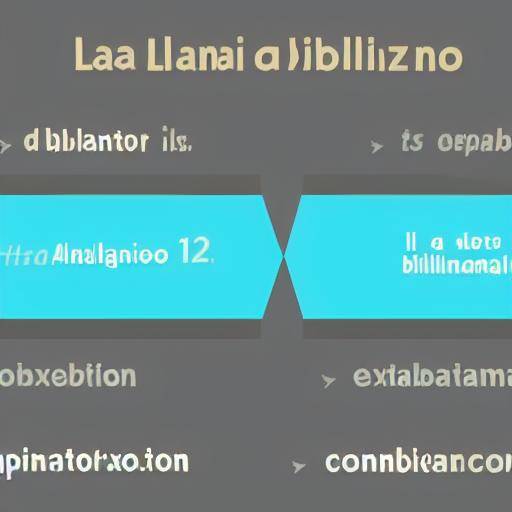
The balance between work and personal life is a significant challenge in modern society. Overloading of labor and personal responsibilities can generate stress and affect the quality of life. In the midst of this scenario, the technique of prioritization becomes a crucial tool to achieve an effective balance between work and personal life. In this article, we will explore in detail how prioritization can help you improve this balance, as well as best practices to manage your time effectively.
Introduction
Work-life balance is an increasingly relevant issue in the current world, as labour and personal demands often compete for our attention. Learning to prioritize properly can make the difference between feeling overwhelmed and achieving a satisfactory balance between all our responsibilities. In this article, you will discover how the technique of prioritization can transform your daily approach, allowing you to concentrate on what really matters both in work and in your personal life.
We will now enter the history and background of prioritization, exploring its evolution over time, its benefits and challenges, best practices and practical advice, and finally future trends and predictions around this vital issue.
History and Background
Priority is a technique that has existed since time immemorial. From the first management systems to modern methodologies, the underlying idea of assigning value and relevance to tasks has been fundamental in time management. Throughout history, various philosophies and approaches have been developed to address this concept. From the famous Eisenhower Matrix to modern methods based on personal effectiveness, prioritization has constantly evolved to adapt to the changing demands of contemporary life.
During the Industrial Revolution, the need to manage time effectively became more evident, leading to the emergence of several time management approaches, including prioritization as one of the most prominent. Throughout the 20th century, time management and prioritization became the focus of increasing attention in the business and personal sphere, leading to the emergence of numerous theories and prioritization techniques.
We will analyze in detail the different stages of the evolution of prioritization, from its historical roots to contemporary methodologies.
Detailed Analysis
Priority offers a number of benefits, but it also entails specific challenges that need to be addressed. We will explore the advantages and disadvantages of prioritization in work-life balance, providing statistics, case studies and concrete examples to illustrate their impact in real contexts. We will also discuss current trends in time management and how prioritization remains one of the key tools for success in the working environment and personal life.
One of the main challenges we face in trying to prioritize effectively is managing our own expectations and those of others. The pressure to meet multiple commitments can generate tensions and negatively impact quality of life. However, by mastering the technique of prioritization, we can learn to allocate time and energy more effectively, maximizing our performance in all areas of our lives.
Comprehensive review
In this section, we will explore practical applications of prioritization in various contexts, from the search for work-life balance to its impact on personal decision-making. We will examine real case studies and good practices, which will allow us to understand more deeply how prioritization can transform time management and promote a sense of balance and well-being.
We will also explore the views of experts in the field of time management and working psychology, providing an integral view of the strategies and approaches recommended by professionals and opinion leaders. Here, we will analyze in detail the advantages and limitations of various prioritization techniques, giving readers a complete understanding of how to apply these principles to their own work and personal life.
Comparative analysis
By comparing prioritization with work-life balance and time management, we will discover the similarities, differences and possible synergies between these fundamental concepts. By understanding how these issues are interrelated, readers can develop a deeper understanding of how prioritization is part of a comprehensive approach to achieving a satisfactory balance between work and personal life.
Throughout this analysis, we will highlight concrete examples and scenarios that illustrate the interconnection of these concepts, providing a holistic view of the importance of prioritization in the broader context of time management and work-life balance.
Practical Tips and Accessible Recommendations
We will now enter the most practical section of the article, offering concrete advice and recommendations to effectively implement the prioritization technique. Through numbered lists and key points, we will provide readers with a set of clear guidelines to apply prioritization in their day to day, both in the workplace and in their personal life. These councils will address common challenges and provide specific solutions that readers can incorporate immediately.
Perceptions of Industry and Expert Reviews
In this section, we will immerse ourselves in the perceptions of experts and industry leaders regarding prioritization, work-life balance and time management. Through interviews and insights from leading professionals, readers will get a deep understanding of how these concepts are applied in working environments and how emerging trends are shaping how organizations and individuals address time management and the balance between work and personal life.
Case Studies and Practical Applications
Through detailed analysis of real cases, we will present concrete situations in which prioritization has had a significant impact on time optimization and the achievement of an effective balance between work and personal life. In exploring these case studies, we will provide concrete examples of how prioritization can transform the way we address our daily responsibilities, both at work and in our personal life.
Future Trends and Predictions
Finally, we will examine emerging trends related to prioritization, work-life balance and time management, providing a vision of how these concepts will evolve in the future. Based on current data and expert opinion, we will offer predictions on how the practice of prioritization could be adapted to meet the changing demands of work and personal life, as well as the opportunities and challenges that are visible on the horizon.
Conclusion
In short, the technique of prioritization is a fundamental component for achieving an effective balance between work and personal life. Throughout this article, we have explored its historical evolution, advantages and challenges, practical applications, industry perceptions, success stories and future trends. We hope that these reflections have given readers a deeper understanding of how prioritization can transform their daily approach and support a satisfactory balance between work and personal life.
FAQ
1. How can I learn to effectively prioritize my tasks?
Learning to prioritize effectively means understanding the relative importance of each task and its impact on your long-term goals. By evaluating tasks based on their urgency and importance, you can assign your time and effort more effectively, maximizing your productivity and achieving a sustainable balance between work and personal life.
2. What is the best approach to handling high-pressure situations and multiple demands?
In high-pressure situations and multiple demands, it is crucial to keep calm and clear your priorities. Identify critical tasks and focus on progressively completing them, using techniques such as grouping similar tasks and delegation where feasible.
3. How can I apply the technique of prioritization in my personal life?
The technique of prioritization is equally applicable to personal life. Identify your personal goals and values, and prioritize activities that support these fundamental aspects of your life. It also sets clear limits to protect your time and energy.
4. What role does technology play in the prioritization process?
Technology can be a valuable tool for prioritization, as there are numerous applications and tools that can help you effectively manage your tasks and priorities. However, it is important to balance the use of technology with disconnecting periods to maintain balance within your personal life.
5. How can I overcome the feeling of guilt by prioritizing my personal well-being over labor demands?
Self-compassion is fundamental in these cases. Recognize that caring for yourself is not selfish, but necessary to maintain a healthy balance. Clearly communicate your limits and seek support from your colleagues and superiors to establish an environment that values personal well-being.
6. How can I maintain motivation and discipline to consistently prioritize my tasks?
Motivation and discipline can be maintained through the visualization of the long-term benefits of prioritization. Establish clear goals and celebrate achievements, even the smallest, can strengthen your commitment to the prioritization process.
Conclusion:
In conclusion, prioritization technique is a powerful tool that can significantly influence the balance between work and personal life. By understanding their history, benefits and challenges, practical applications, industry perceptions and future trends, readers can adopt a more strategic and effective approach to managing their time and energy in all aspects of their lives. By integrating prioritization in a conscious and reflective way, it is possible to achieve a healthier and more satisfactory balance between the demands of work and the quality of personal life.
We hope that this article has provided an integral and practical view of the technique of prioritization and its impact on work-life balance. By implementing the recommendations and tips provided, we are confident that readers will be able to experience significant improvements in their overall productivity and well-being.






















































